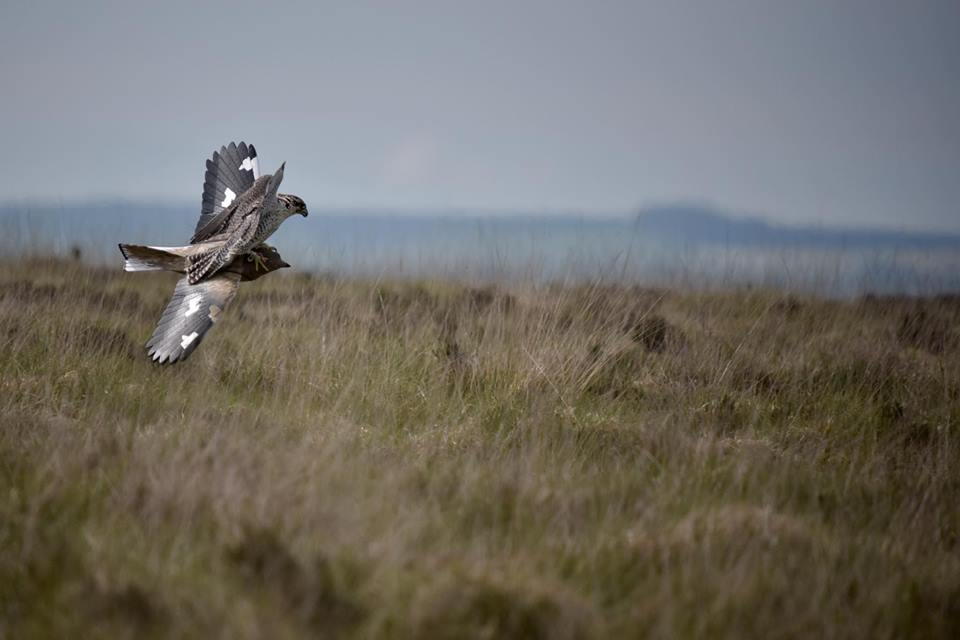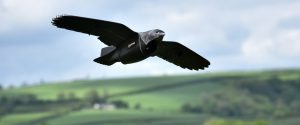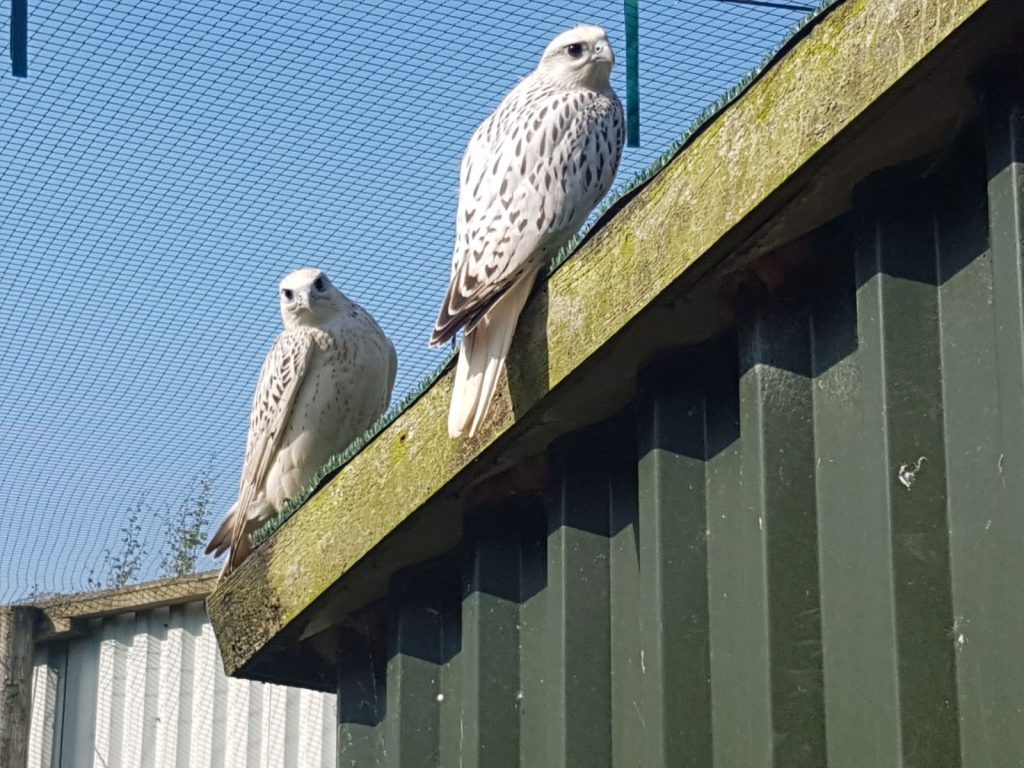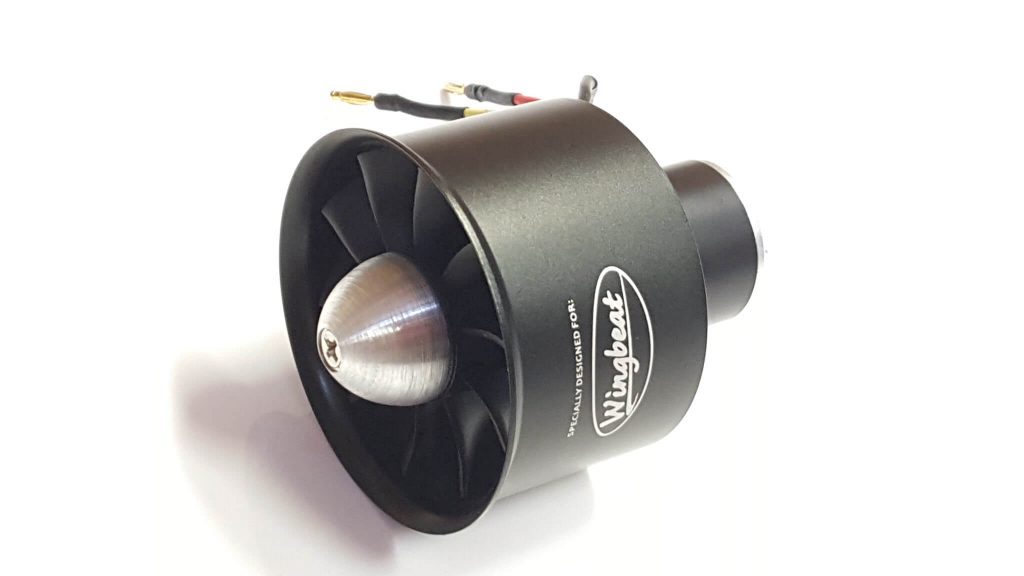Why Rofalconry
Why Rofalconry?
At Wingbeat, we believe that one of the most beautiful things falconry can offer is the pursuit flight. The contest for aerial supremacy, which can play out in so many ways, is the perfect demonstration of the predator/prey relationship. These flights demonstrate so much of the falcon’s potential and allows the falconer, now merely a spectator, to experience ringing flights, dramatic stoops and rapid low-level tail chases.

The perfect pursuit flight is a culmination of many factors and is only achieved when they all synchronise. The falcon, the way she is exercised, shaped and managed, as well as the quarry and the environment are all key elements.
As falconry continues to progress, we are seeing an increased availability of top class falcons due to the success of captive breeding, but a decrease in suitable land and quarry. As fieldsports evolve, all accept a degree of artificial substitution in order to fit into an ever-changing world.
Wingbeat specialises in the production and use of Roprey. Our artificial quarry, engineered specifically for this purpose, allows for a whole new branch of falconry. Our aim is to provide every falconer with the opportunity to achieve consistent high quality flights and truly optimise the performance of their falcon. When Rofalconry is combined with hawking live quarry, the effect on the falcon must be seen to be believed.
Above all else we want falconers to enjoy flying their hawks to the highest standard. By making Roprey available, and therefore largely removing the constraints of suitable land, we hope to see falconers across the world enjoying their falcons like never before.
The Rocrow Journey
Your Roprey model has been specifically designed as a prey for hunting falcons. It’s the result of many years of research and development carried out by a team of experienced falconers and technicians, as well as many thousands of flights by several different species of falcons in different terrains and climates. We have made and flown many prototypes, continually changing and improving the model before reaching the final result.
Although in falconry we tend to recognise two main styles of attack – the pursuit flight in which the falcon starts below and behind the flushed prey, and the waiting on flight in which the falcon stoops at the flushed prey from a position of aerial dominance, in nature falcons use both methods. Some falconry flights also employ both methods, for example, in magpie hawking, or in the anwerten flight at crows. Accipiters and buteos also use both techniques, but often in confined spaces.
As more and more of us use domestic-bred raptors, which have no hunting experience at all, our challenge is to teach these youngsters how to become as proficient as wild adults. During the past fifty years I have tried out most of these techniques, such as wild hacking, tame hacking, make hawks, thrown lures, dragged lures, hand lures, pole lures, lures pulled from cars, spinning lures, flapping lures, lures lofted on kites, balloons, multicopters, tow planes, bagged prey, and flapping dummies, with varying degrees of success and frustration. All have their limitations.

Getting back to first principles, what are we trying to achieve?
Our newly fledged raptor needs to learn and develop both physically and mentally, while at the same time avoiding undesirable traits, such as lack of focus, raking off, checking at other prey and so on. These are the attributes I’m trying to develop in my young falcon:
- Confident flying ability in all gears and in all situations. Pinpoint accuracy in flying, landing and using wind shear, able to stoop hard down a strong wind near to the ground. Able to climb both in a straight climb but also knowing when ringing is more efficient. Able to confidently negotiate obstacles including understanding wires and fences.
- Excellent footing ability. Knowing to strike at the head whenever possible. Knowing which parts of the body, such as tail and wing feathers, are not worth catching. Knowing the likely last-moment moves of the prey to avoid being footed and how to counteract them. When the two dots converge in the sky they shouldn’t come apart. Being able to do a devastating knock down with an accurate stoop.
- Physical fitness. In falcons, able to sustain a 500 metre (1650 feet) climb without missing a wing beat. Good aerobic as well as anaerobic respiration. Ability to maintain a sustained attack for up to ten minutes. Carrying no surplus fat. In a goshawk, able to sustain a high speed chase for 500 metres.
- Launching an immediate flight the instant the hood is removed, without hesitation or delay, climbing and planning her attack as she goes, and evaluating the skill, power and ability of her prey. Not breaking off the hunt or resting. Willing to take on prey on passage, even with a 200 metre (660 feet) height advantage.
- Flying only at her chosen prey species, not checking at other species, and not changing from one selected prey individual to another mid-hunt. She must lock on and stay focused on a single target.
- Strategic ability. Able to take advantage of the wind and sun to place herself at an advantage for attacking the prey. Not slavishly tail-chasing. Appreciating the relative attack climb angles of herself and the quarry, both into the wind and down wind. Fooling the prey into making a bad move. Making feinting stoops to drive down the prey or put it in a bad position for a second killer stoop. Planning a stoop so that if it misses, she can instantly command good height and position advantage rather than being thrown wide and giving the prey opportunity to escape. Out-performing the prey in a tight turn down wind. In the case of a waiting-on falcon, the ability to attain aerial dominance without prey being seen, to position herself well in relation to the falconer and the wind, and to be confident enough to wait until she is served.
These are the main things I am looking for in my hunting falcons. Of course if you are rehabilitating an orphaned falcon to the wild you may want it to hunt a variety of species, not just one. Or if you are doing flying displays for the public, you may just want your falcon to chase around the sky; the public will not know any better. But if you are a serious falconer, and want your domestic-bred falcon to fly like a haggard, then these are your main criteria.

These young captive bred falcons, not yet hard penned, have a way to go before they are fully mentally and physically conditioned ready for hawking
I’m not going into an exhaustive critique of all the different methods, from hacking to kites to drones etc. If you have tried them, ask yourself: which of the six attributes I have listed does each method or training tool develop? Which does it fail on?
After all these years of experiments, it was clear that I needed a lure that looked the same as the real prey, behaved the same, had similar flight performance characteristics, was controllable at all times, could fly high and freely in the sky, was safe to catch, could withstand repeated attacks and could be mass produced at an economical price for the tiny falconry market, with standardised models that would allow for competitive events.
This was a tall order and we have had many frustrating dead ends and expensive mistakes. Only in the last few years have advances in materials technology and electronics become sophisticated enough for us to achieve what we wanted. Now we have tough and light EPP (Expanded Polypropylene) foam which is rigid enough to fly with, tough enough to withstand impacts and light enough for the falcon to hit. And we have miniaturised electronic speed controllers, receivers and stabilisers, factory made electric ducted fan motors and LiPo batteries suitable for our flight specifications. We can even use FPV (First Person View) or Autopilots if we wish. But bitter experience has shown that the more technical and complicated you get, the more hitches you will have, so yes, while technically we can provide various fancy add-ons, usually the good old KISS method is best. (Keep It Simple, Stupid!).

Being hit hard by a raptor and then crashed to the ground is not the most friendly treatment for a sophisticated technical gadget. Very few items can withstand this treatment. The safety of the raptor is paramount for us, so if anything breaks, we want it to be the model, not the bird. But never forget this is an extreme sport. If our falcons were human we would be wrapping them up in all sorts of safety gear. So the model has to be able to take a beating, to be hit from above, below, on the extremities, on the head, to be clawed, bitten and smashed head first into the ground. Today, tomorrow, and all season. The only way to do this is to have mass-produced standardised parts that can be easily replaced on a modular system. Some parts, such as the head, are deliberately sacrificial because this is where the falcon catches and bites. So the head foam is easily and cheaply replaced as needed. Other parts such as the EPP body and wings will take collision or claw damage. These can all be glued back together usually in a few moments in the field.
Other parts, such as the fan, can get broken and can be replaced, so can the motor itself, without too much difficulty or cost. The internal electronics do not usually take damage because they are protected inside a special double shelled fuselage. There are no wheels; the model is hand launched and no special airstrip or landing surface is needed. The end result is a model that despite taking punishment, can be repaired and have parts replaced indefinitely, a bit like my old hawking knife that has had three blades and two handles – philosophical question: is it still the same knife?
We also got distracted with false starts such as flapping wings. But we could only really test this out by flying the models with falcons and seeing how they reacted. It turned out that while flapping wings are very attractive for getting a young raptor started, after an initial catch or two, flapping wings made no difference. Instead they become a liability. So for example, this magpie that we made in 2005 is really attractive to raptors, but it is so fragile that the first time a raptor hits it, it will wreck it. So, it’s fine as a decoy in a dho-gazza, but not suitable as a training aid (and it doesn’t fly, it’s on a string!).
There are three main flapping wing designs:
- Wings that power flap and make the model fly.
- Wings that flap using servos but do not contribute to flight power.
- Wings that flap passively once the model has airspeed.
The first method is great for studying the theory of bird flight but the mechanisms are fragile and often have exposed hard parts that could injure the falcon. Their flight performance cannot provide what is need in falcon training and, because the fuselage moves up and down, it does not provide a stable platform for FPV. So after initial trials we abandoned that option.
We tried the second option on our first model, the Robara. But again the mechanism was prone to failure and the wings were liable to break during extreme flight manoeuvres. So we use it only in early training of Houbara falcons and then switch to the Sports wing which is fixed and therefore stronger. You can see the Robara’s flapping wings here:
Our second model, the Rocrow or Rokarrowan has a tough one-piece fixed wing. In early training we found you don’t need a flapping wing at all. To make the model more attractive, any fluttering will do, and the simplest way to achieve this is to glue some shredded black polythene bin liner to the tail or trailing edge of the wings. This is virtually weightless and does not interfere with flight performance, but is very attractive to young raptors. After a few catches this is no longer necessary and we remove it. Most falcons never need it.
For pest control we can add flapping wing tips to the Roperegrine. These simple polythene extensions give the wing shape a more pointed profile and flap passively once the model has airspeed. During the stoop they make a scary Brrrrr noise. But our tests so far with corvids and gulls tend to show that the flapping wings do not make much difference. What is important is the flight behaviour of the predator. If the predator makes moves towards the prey or attacks it, then the prey flees. On the other hand, if the predator just flies around, with or without flapping wings, corvids and gulls may well come in and mob it. This makes the problem worse, not better. Flying LOS (Line of Sight) limits the pilot to a radius of operation of around 300 metres maximum. This may be sufficient for a runway or land fill site. For longer chases, the pilot needs FPV and the model must be capable of carrying it. We are doing this with the Roperegrine but need to do more trials before offering it as a commercial option. We also can do an autopilot feature in which the Roperegrine flies on a predetermined route using waypoints, but although this allows coverage of a larger area, such as a field crop, orchard or vineyard, it does not include attack behaviour, so you need to intersperse it with LOS attacking flights and it is complicated to set up. Patrol flights which do not include attacks aimed at specific prey, with or without flapping winged models, quickly trigger mobbing behaviour, or habituation.
The Advantages of Rofalconry
- Unlike live prey, the behaviour of Roprey can be carefully controlled to allow the falcon to learn and succeed at the desired pace
- Roprey can be tailored to match a huge number of real prey species and so are excellent for developing a falcon’s search image, a great preparation for hawking live prey
- Falcons become hugely motivated to chase Roprey, and those falcons with a tendency to abandon the lure in favour of something more exiting to chase rarely pull off from a Roprey slip
- With instruments such as altimeters, airspeed meters and timers, it is possible to put a falcon through a carefully prepared programe of physical and mental development. Such a falcon can gain a year’s hunting experience in a month.
- For falconers who do not have access to good hunting grounds, Rofalconry allows flights to be undertaken in one chosen spot without the need for many square kilometers of hunting area. Also friends can bring their falcons along too and everyone can enjoy flying their falcons together at the same venue. In countries such as Japan, and in western Europe, where the land is heavily developed, this is a huge advantage.
- Not only can falconers enjoy rofalconry individually, it is possible to hold competitions together, creating a whole new sport in its own right.
- For flying displays, Rofalconry is the best way to show what falcons love to do best – chasing prey. Instead of tame displays calling falcons to the lure or fist, it is possible to watch them hunting high in the sky as they do in nature. One quickly forgets that the prey is not real.
- Rofalconry allows falcons to hunt prey every day without any danger of reducing the numbers of wild prey. It is a totally sustainable sport and has had great conservation benefits to species such as the Houbara bustard in the Middle East.
- Rofalconry does not use wild prey, so there are no welfare issues and Roprey can be hunted at any time of year. Even where it is illegal to hunt wild prey, the falconer can still fly falcons in Rofalconry.
- Our models are now being used in rehabilitation of raptors. Both orphaned raptors and injured raptors need proper fitness training and practice hunting skills before they can be returned to the wild.
- Our Rofalcon predator models can be used in pest control at airfields, landfill sites, vineyards and areas of valuable crops, to chase away pest birds.
- Roprey can be flown from moving cars out in the desert in high speed hunts across the dunes. Total adrenaline rush!
Competitions
There are two main disciplines of Falcon racing:
1. Flat racing
2. Hunt racing
Flat racing is a timed race over level ground in a straight flight to the lure (tilwah) between a start beam and a finish beam spaced 400 metres apart. Flat Racing is used to determine the fastest Falcon. Originally practised in the Middle East, and is making its way to Britain.
Hunt racing is used to test the Falcon’s hunting abilities. It starts with a Falcon being unhooded and chasing a robotic prey into the sky, climbing as quickly as it can until it reaches a pre-set height (normally events run at 100 metres altitude intervals to a maximum of 500 metres). Once it has reached the set height, the pilot dives the prey. The Falcon must stoop and pursue the prey, catch it in the air and land on the ground with it inside a 150 metre square landing area. The fastest Falcon wins.
Wingbeat are proud to be the official model associated with the Hunt Race in Britain. These take place at Vowley in Wiltshire. For further information head over to the website www.vowley.com
General Notes
The Falcon races suit all Falcon species and can be divided into class categories depending on demand. The races have clear start and finish end-points that can be accurately timed without dispute. They also allow electronic recording for post-flight analysis in case of any uncertainty.
A Falcon race shows a progressive top score as the event unfolds, so that competitors can see what time they have to beat in the event. It also allows FRA clubs to post their scores on the international FRA online scoreboard. The races can be organised locally by clubs for their own events, but the results can be put forward as ‘Qualifiers’ for a national competition. Falcons that qualify in National Qualifier races can attend a National Finals event and win a National Championship in its class. But in addition to this, because the event is standardised to FRA rules, the National Winners can be entered on the International scoreboard and at the end of the season win the World Class event. This system allows competitors even from small clubs to enter a world event without the cost and difficulties of transporting their Falcons to and from another country. This avoids issues with CITES, Health Certificates, quarantine and periodic cancellations due to Avian Flu.
While Flat Racing tests the speed of the Falcons, Hunt Racing offers different elements:
- Hunt Racing tests the strength and fitness of the Falcon in the climb, its speed in the stoop and the accuracy of its footing of the prey. While a skilled pilot can help the Falcon to demonstrate this, ultimately the competition is designed to measure the ability of the Falcon as a potential hunter rather than the skill of the pilot.
- Hunt Racing provides an exciting and varied spectacle for viewers so that it is a fun event to watch and attend, thus maximising day attendees and demand for TV or film recording and hence sponsorship.
- Hunt Racing offers an element of uncertainty. This means that the recorded times of finalists can be several seconds apart, rather than milliseconds, and that an ‘outsider’ has a sporting chance of winning.
- Hunt Racing allows flights to be run in about six minutes, or ten per hour. This enables a significant number of competitors to participate in one day. Flat Racing can run up to sixty Falcons in one hour.
- The Hunt Racing area, being limited to 150 x 150 metres, allows clubs to participate even if they do not have access to big open spaces.
- Hunt Racing provide different levels of difficulty so that, for example, breeders can showcase young novice Falcons flying at the beginning of the season for buyers to evaluate them. It also provides tougher levels of competition for more skilled or more powerful Falcons.
- Hunt Racing supports the tradition of real Falconry by having some events that are only open to proven hunting Falcons, and by testing skills that a Falcon needs to be a real hunter. This is to avoid a division between ‘competition’ Falcons and ‘hunting’ Falcons, especially for breeders developing bloodlines.
- In Hunt Racing the Falcon must unhood cleanly and fly without hesitation the moment that the hood is removed. This is what we expect of a hunting Falcon.
- Hunt Races always take place within 150 metres of spectators and cameramen. This enables film crews to set up cameras in a predictable way for filming action.
- At larger events, the time clock and the GPS track of the Falcon, can be shown live on screen direct from the timekeeper’s receiver.
- While the body and wings of the prey must all conform to the same factory-made format, the colour or species of the prey are optional to allow individual preferences of each Falcon, especially those that hunt. The motor and other parts of the roprey are optional to encourage progress and development in the performance and reliability of the models. Making an engine more powerful does not necessarily confer an advantage, if the Falcon itself is not powerful. If the prey gets too far ahead of the Falcon, the Falcon may be de-motivated and slow down. Also a more powerful motor could drain the battery more quickly, potentially leaving the pilot in difficulties at the end of the flight.
- The model prey provides a platform for team colours and logos, and for logos from sponsors. These logos will be fully visible in photos and films of the event. This provides an incentive for sponsors to support a Falcon or team.
Visit our Partners at Vowley.com to discover more...

